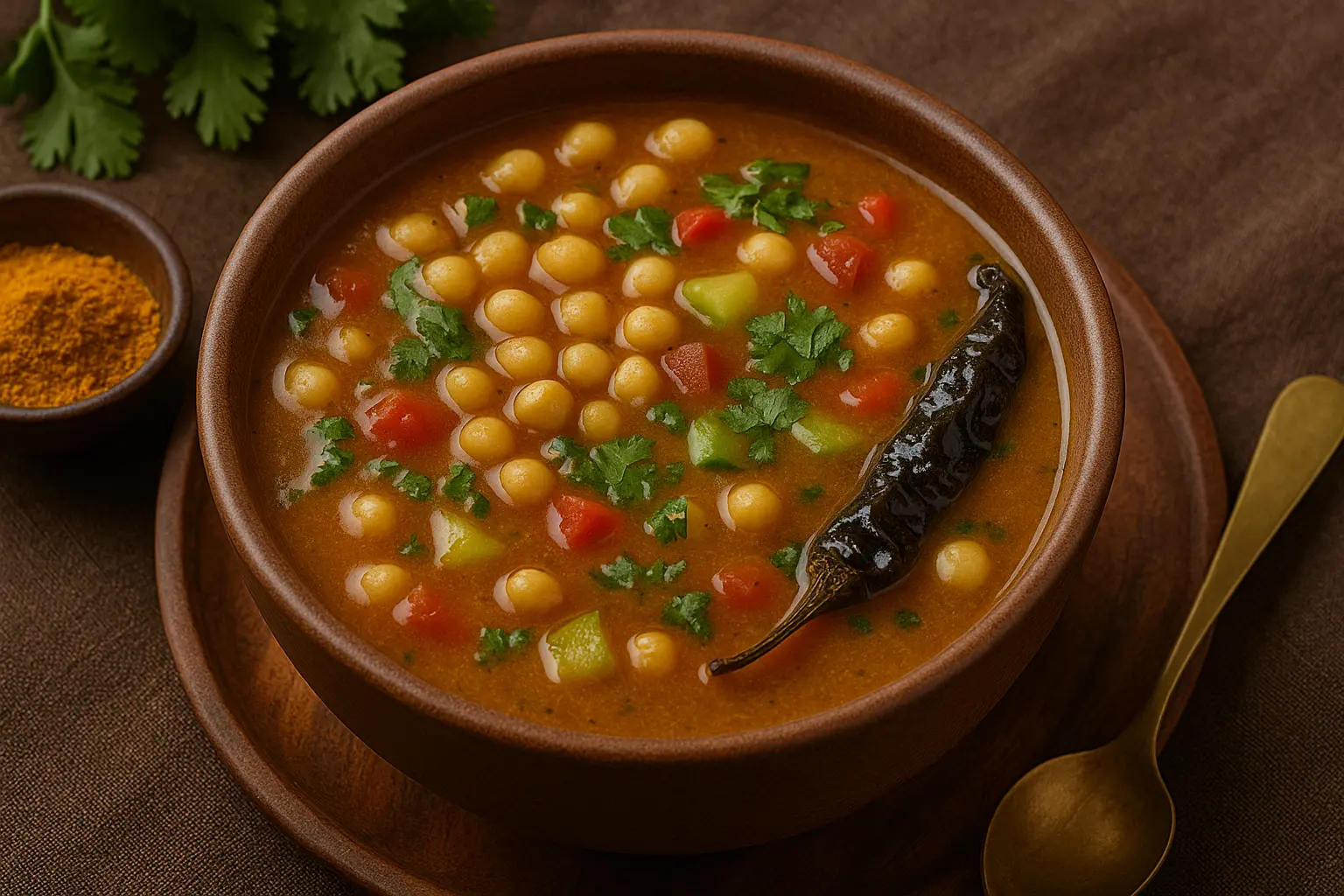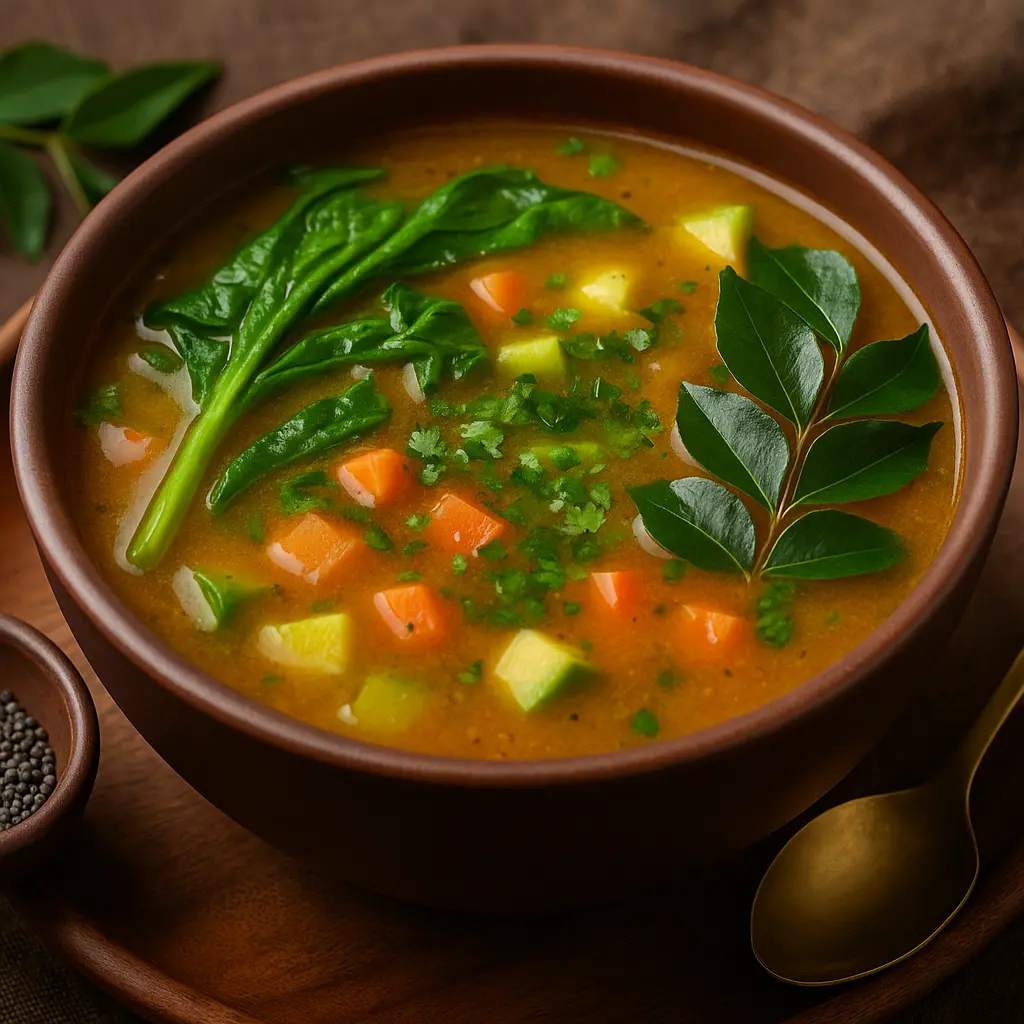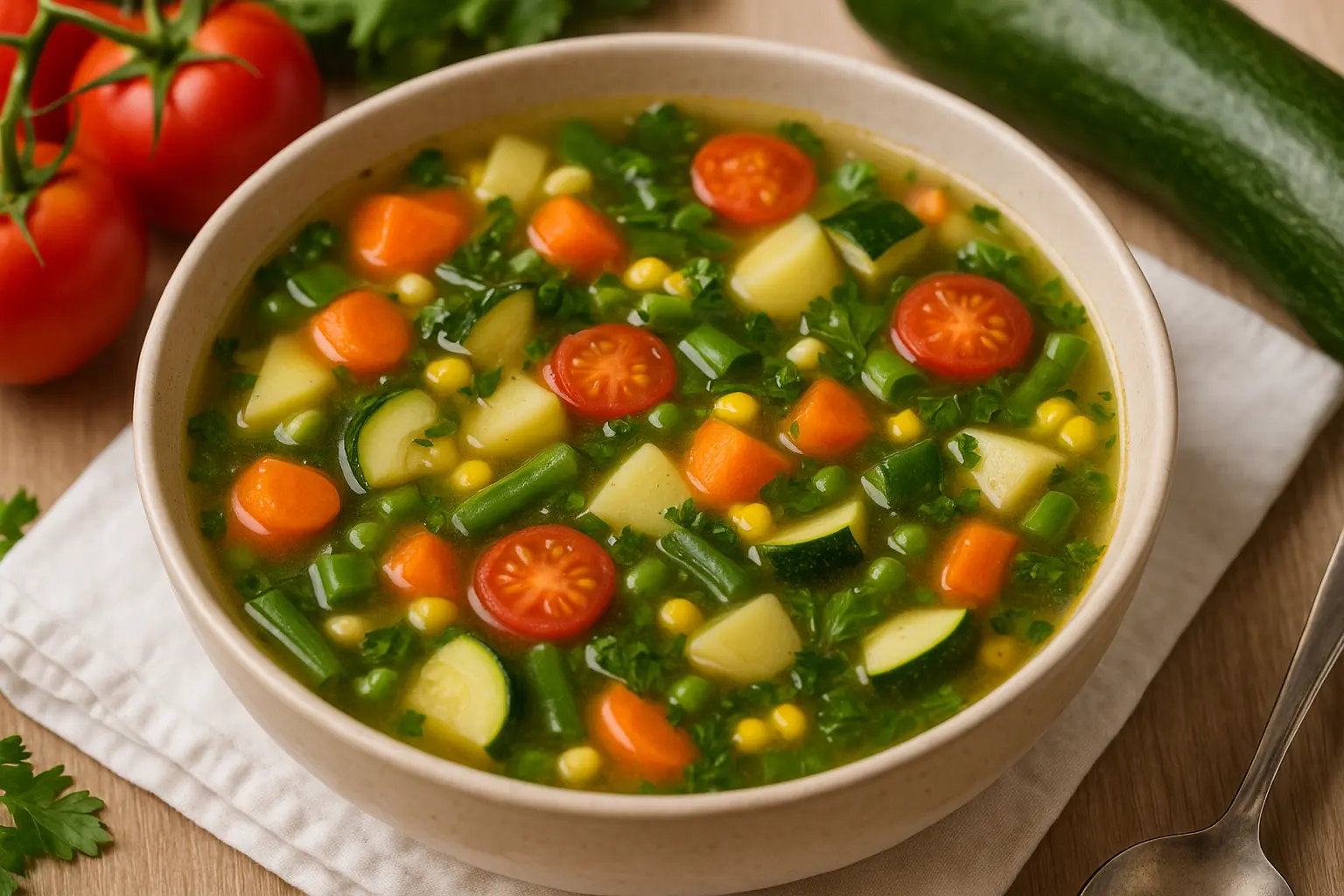When we think of Indian soups, most people’s minds immediately go to dal or rasam. These are household staples across India, deeply comforting and endlessly varied. But Indian cuisine is far richer in its soup traditions than these two alone. Every region of India, from Kashmir to Kerala, has its own way of turning seasonal vegetables, grains, spices, and even herbs into nourishing bowls of warmth.
This guide takes you deep into the world of Indian soups beyond dal and rasam, exploring their history, variety, health benefits, and recipes you can try at home. Whether you’re looking for something vegan, gluten-free, Ayurvedic, or just hearty and comforting, you’ll find inspiration here.

🌿 Why Indian Soups Deserve Attention
Indian soups don’t always resemble Western-style creamy soups. They are lighter, brothier, and often packed with spices that aid digestion. Some are restorative, meant for recovering from illness, while others are festive or ceremonial, designed to be shared at gatherings.
Medicinal Roots: Many soups come from Ayurveda, India’s ancient system of medicine. Soups like pepper rasam, ginger broth, or ajwain water soups are natural remedies.
Seasonal Balance: Indian cooking emphasizes seasonal eating. Soups are adapted to winter chills (millet soups, spiced root soups) or summer heat (light cucumber or yogurt-based soups).
Sustainability: Often made with humble ingredients like peels, stems, or leftover grains, soups reduce food waste while being nutrient-rich.
🥄 Regional Indian Soups You May Not Know
1. Mulligatawny Soup (Tamil Nadu meets Colonial Influence)
One of the few Indian soups that went global, mulligatawny literally means “pepper water” (milagu thanni). Originally a simple spiced broth, it evolved under British colonial kitchens into a hearty soup with lentils, coconut milk, and sometimes chicken.
Key ingredients: Black pepper, curry leaves, tamarind, coconut milk
Vegan version: Lentils + vegetables + coconut milk
Perfect for: Rainy days or winter nights
2. Kashmiri Shorba
In Kashmir, shorba (borrowed from Persian cuisine) is a staple. It can be lamb-based or vegetarian, usually a light, spiced broth flavored with saffron and fennel.
Key ingredients: Fennel, dried ginger, saffron, mild spices
Benefits: Warming, aromatic, supports digestion in cold climates
3. Manchow & Hot-and-Sour (Indo-Chinese Influence)
India’s love affair with Indo-Chinese cuisine gave birth to soups that are now staples in restaurants and homes alike. While not traditionally Indian, they are deeply localized with Indian spice twists.
Manchow Soup: Dark, spicy broth with soy, garlic, ginger, topped with crispy noodles
Hot-and-Sour: Vinegar-spiked soup with chilli, tofu/paneer, and vegetables
4. Gujarati Kadhi-Based Soups
Kadhi is usually eaten with rice, but it can be thinned down into a light soup. Made with yogurt, chickpea flour, curry leaves, and ginger, kadhi soup is tangy, warming, and probiotic-rich.
Best enjoyed in winter or as a light meal
Vegan option: Replace yogurt with cashew or coconut yogurt
5. Rajasthan’s Bajra Raab
A rustic soup made from pearl millet flour (bajra), jaggery, and ghee, this is considered a tonic during winters and postpartum recovery.
Naturally gluten-free, nutrient-rich
Thick, earthy, and energizing
6. North-Eastern Vegetable Broths
In states like Nagaland, Mizoram, and Meghalaya, soups are made with seasonal greens, fermented bamboo shoots, and mild spices. They’re broth-like, light, and deeply refreshing.
Ingredients: Local herbs, smoked chillies, fermented products
Best for: Those looking for lighter, clean flavors
🍲 Ayurvedic and Healing Indian Soups
Ayurveda classifies foods by their ability to balance the three doshas (Vata, Pitta, Kapha). Soups are often recommended for digestion and seasonal cleansing.
Pepper-Ginger Soup: A cure for colds, boosts immunity
Ajwain-Tomato Soup: Helps with bloating and digestion
Bottle Gourd Soup (Lauki Shorba): Cooling, recommended for Pitta balance
Carrot-Beetroot Soup with Cumin: Builds blood and strength
🌱 Plant-Based & Vegan-Friendly Indian Soups
Most Indian soups are naturally vegan or can be adapted easily.
Spinach-Tomato Shorba: Light, tangy, iron-rich
Coconut-Milk Vegetable Soup: South Indian-inspired, creamy without dairy
Pumpkin Soup with Curry Leaves: Sweet-spiced, grounding
Moringa Leaf Soup: High in antioxidants and protein
🥬 Gluten-Free Indian Soups
Since many soups rely on lentils, millets, and vegetables, they’re naturally gluten-free.
Millet & Vegetable Soup: Fiber-rich, hearty
Sweet Corn-Coconut Soup: Gluten-free alternative to Indo-Chinese corn soup
Mixed Lentil & Spinach Soup: Packed with plant-based protein
🧄 Flavor Profile – What Makes Indian Soups Different?
Indian soups rely less on cream and more on spice tempering (tadka). Just a drizzle of hot oil with mustard seeds, cumin, garlic, or curry leaves can elevate a simple soup into something extraordinary.
Tamarind or lemon juice for tang
Fresh herbs like coriander and mint for freshness
Ghee or coconut oil for depth
📖 Recipes You Can Try
Here are 5 complete recipes you can add to your kitchen rotation:
1. Spinach & Tomato Shorba
Spinach leaves – 2 cups
Tomatoes – 2, chopped
Ginger – 1 tsp
Garlic – 2 cloves
Cumin – 1 tsp
Salt, pepper, lemon juice
👉 Simmer spinach + tomato + ginger. Blend smooth. Add cumin tempering. Finish with lemon.
2. Pumpkin Curry-Leaf Soup
Pumpkin cubes – 2 cups
Curry leaves – 6
Coconut milk – ½ cup
Green chilli – 1
👉 Boil pumpkin until soft, puree, add coconut milk. Temper with curry leaves + mustard seeds.
3. Bajra Raab (Rajasthan)
Bajra flour – 3 tbsp
Jaggery – 1 tbsp
Ghee – 1 tsp
Water – 2 cups
👉 Roast bajra in ghee, add water, cook until thick. Sweeten with jaggery.
4. Moringa Leaf Soup
Fresh moringa leaves – 1 cup
Onion – ½
Garlic – 3 cloves
Pepper – ½ tsp
👉 Boil moringa leaves with garlic + onion, blend, season with pepper.
5. Indo-Chinese Hot & Sour Soup
Cabbage, carrot, beans – 1 cup each
Soy sauce – 1 tbsp
Vinegar – 1 tsp
Black pepper – 1 tsp
👉 Sauté veggies in oil, add water, soy, vinegar, and spices. Thicken with cornstarch if desired.
🍴 Pairing Indian Soups
With millet flatbreads (bajra roti, jowar bhakri)
As a starter before a rice meal
With idli/dosa for a South Indian touch
On their own as a light dinner
💡 Tips to Make Soups More Flavorful
Use fresh ground spices – roasting whole spices before grinding makes a huge difference.
Balance sourness and spice – tamarind, kokum, or lemon juice works wonders.
Play with textures – chunky vs smooth soups depending on your preference.
Don’t overcook greens – add spinach, coriander, or moringa at the end to retain nutrients.
🧘 Health Benefits of Indian Soups
Digestive Aid: Ingredients like cumin, ajwain, ginger soothe the stomach.
Immunity Boost: Garlic, turmeric, pepper enhance resistance.
Detox: Light broths cleanse the body naturally.
Weight-Friendly: Many are low-calorie but nutrient-dense.
🌍 Modern Twists on Indian Soups
Chefs today are giving Indian soups global makeovers:
Pumpkin Mulligatawny with Quinoa
Beetroot Shorba with Coconut Foam
Sweet Potato Soup with Garam Masala Croutons
These fusions make them suitable for fine dining while retaining Indian roots.
🏆 Conclusion – Soups That Go Beyond the Usual
India’s soup culture is vast, diverse, and deeply tied to health, heritage, and flavor. Moving beyond dal and rasam opens up a treasure chest of broths, shorbas, and porridges that can easily fit into vegan, gluten-free, and modern lifestyles.
So the next time you crave a warm bowl of comfort, skip the usual and try bajra raab, spinach shorba, or pumpkin curry-leaf soup. They’re soulful, healing, and deeply Indian.
Leave a comment
Your email address will not be published. Required fields are marked *




















